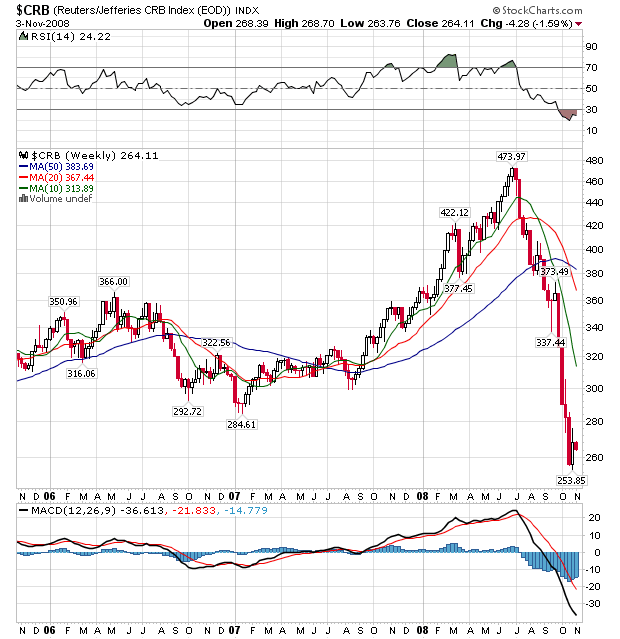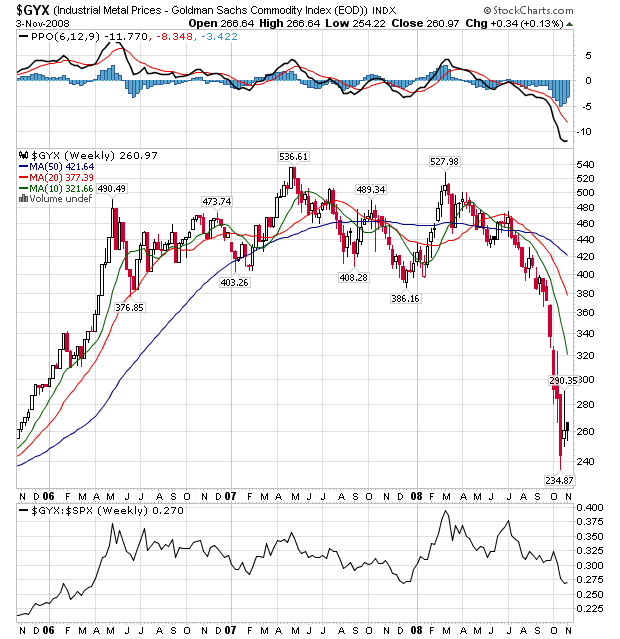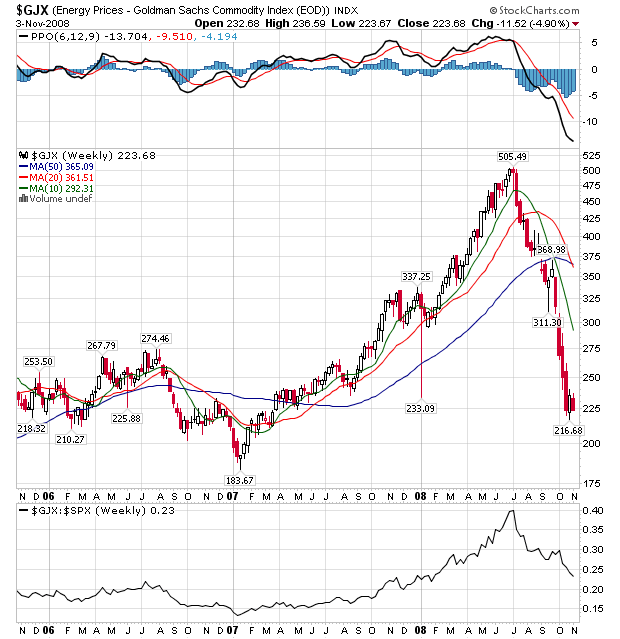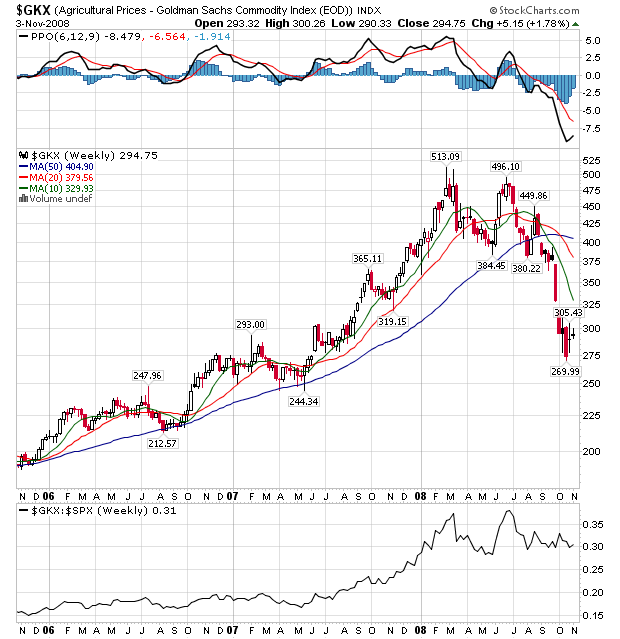A record plunge in commodities may signal the U.S. is headed for the longest recession since 1981, just after Ronald Reagan became president and the economy began a 16-month slump.
Industrial raw materials measured by the Journal of Commerce fell at an annual rate of as much as 56 percent last week, the most since 1949 and worse than the declines before every recession since then. Crude oil, copper and wheat tumbled more than 50 percent from records this year as the U.S. economy declined in the third quarter by the most since 2001.
``The industrial sector, which was helping to keep the recession relatively mild, has completely given way and now we need to be prepared for a much more severe recession,'' said Lakshman Achuthan, managing director at the Economic Cycle Research Institute in New York, which compiles the Journal of Commerce data. ``It's at least going to look something like what we saw in the early 1980s, but it could be worse.''
Some of the relevant charts show big drops in key commodity areas:

The CRB index is now at or near its lowest level in three years. All the SMAs are moving lower, the 10 and 20 week SMAs have moved through the 50 week SMA and prices are below all the SMAs. Bottom line: this is a bearish chart.

Industrial metals are also at or near their lowest level in over three years. Also note this area of the commodities markets was in a trading range for the better part of two years. Now it is out of that range. Also note prices are below all the SMAs, the shorter SMAs are below the longer SMAs and all the SMAs are headed lower. Bottom line: this is a bearish chart.

Energy prices are also dropping. Also note that prices are below all the SMAs, the 20 week SMA is about to move through the 50 week SMA and all the SMAs are moving lower. Bottom line: this is a bearish chart.

Agricultural prices formed a double top in 2008 with the first top occurring near the end of the first quarter and the second top occurring near the end of the second quarter. Since then prices have fallen through all the SMAs, the 10 and 20 week SMAs have crossed below the 50 week SMA and all the SMAs are now moving lower. Bottom line: this is a bearish chart.
In other words, all of these charts indicate there is a tremendous amount of demand destruction -- demand simply going away. The latest readings from the manufacturing sector confirm this view:
The nation's manufacturers continued to cut back production sharply in October for the second straight month, the Institute for Supply Management reported Monday. The ISM index fell to 38.9% in October from 43.5% in September. This is the lowest level since September 1982. The size of the decline was unexpected.
On the good side, this will eventually ease inflationary pressures, thereby making the recent interest rate cuts less problematic in the long run.
Additionally, I would like to point out the possible problem of speculation and its effect on these markets. While I originally felt the run up in commodity prices was mostly the result of supply and demand, I think speculation played a part. However, I have no idea what degree of the price increase was caused by speculation. However, the more speculation was the cause of the multi-year rally, the less the drop in price will lead to a prediction for a longer recession. So keep that in mind with these charts as well.